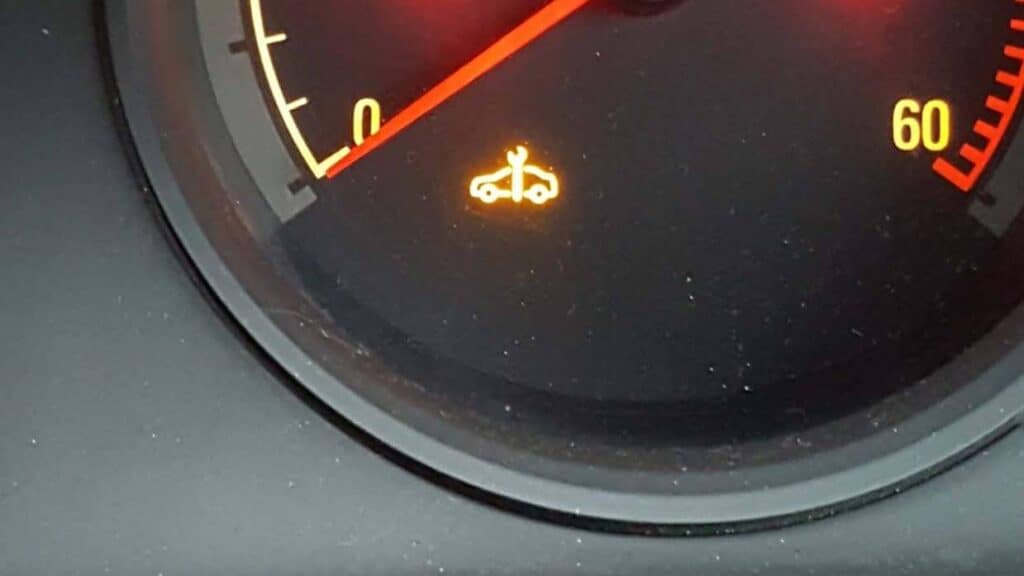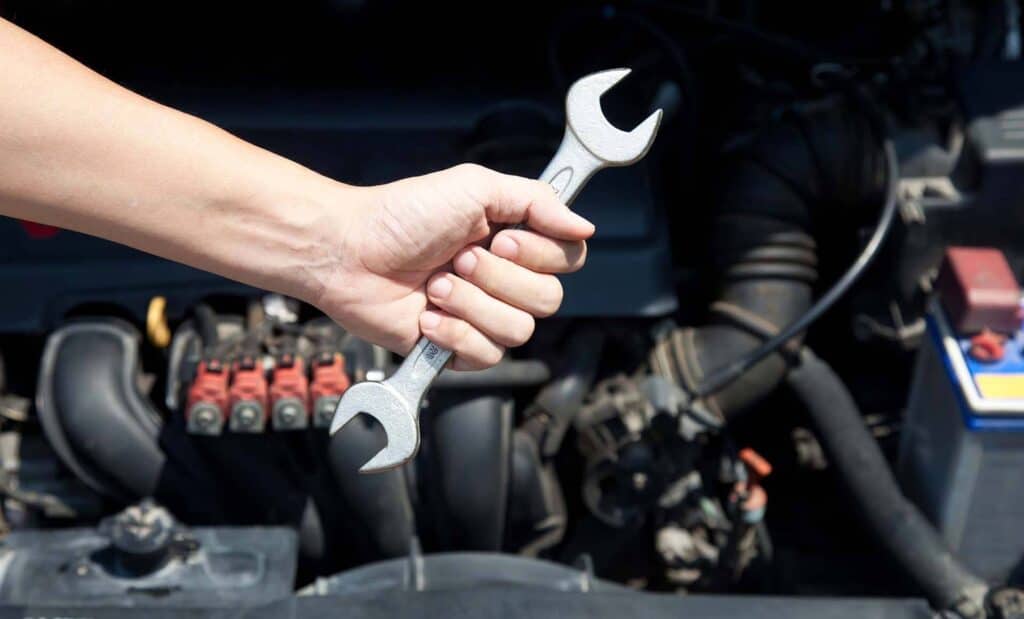Navigating the Dashboard – The Heartbeat of Your Vehicle
Like the rhythm of a heart that speaks volumes about one’s health, the dashboard is the pulse of a vehicle. Every light, every indicator is a whisper or shout from your car, communicating its wellness, its woes, or sometimes, just reminding you of routine needs.
The Warning Lights Unveiled: Service Vehicle Soon vs. Service Engine
In the sea of lights that shimmer and flicker on your vehicle’s dashboard, two particular ones stand out— the “Service Vehicle Soon” and “Service Engine” indicators. While they both demand your attention, understanding their nuances is crucial to address the underlying issues efficiently. The “Service Vehicle Soon” light serves as a sort of jack-of-all-trades. Acting as a sentinel, it keeps an eye out for a myriad of potential concerns, spanning from routine maintenance tasks to more pressing issues that aren’t strictly tied to the engine.
On the flip side, the “Service Engine” light wears its purpose on its sleeve. Focused and direct, this light hones in on concerns related to the engine’s performance and health. Whether it’s a hiccup in the ignition system, an issue with fuel delivery, or any engine-related glitch, this light is your engine’s way of asking for a little TLC. While both lights are paramount, discerning between them ensures that you address the specific needs of your vehicle.

Illuminating Insights: Interpreting the Service Vehicle Soon Signal
Broad Scope of the Warning: The “Service Vehicle Soon” light serves as a catch-all for a variety of vehicle concerns. Unlike specific warning lights, such as those for battery or oil, this light caters to more general vehicle health and maintenance reminders.
Routine Maintenance Reminders
• Periodic Checks: Sometimes, the light merely acts as a reminder for scheduled service intervals, much like a calendar notification for your car.
• Oil Change Alerts: The longevity and performance of a vehicle heavily rely on the quality and level of its engine oil. This light can occasionally remind drivers of upcoming or overdue oil change schedules.
Minor Issues Calling Attention
• Sensor Glitches: Modern vehicles are equipped with an array of sensors. Sometimes, these sensors might misread or malfunction, prompting the warning.
• Loose Gas Cap: Something as simple as a gas cap not being securely fastened can activate the warning. A quick check and tightening can resolve such an issue.
• Expired Battery in Key Fob: In some modern vehicles with keyless entry and start systems, a low battery in the key fob might send a signal to service the vehicle soon.
Major Concerns Lurking in the Shadows
• Emission System Issues: Problems with components like the catalytic converter or the exhaust gas recirculation (EGR) valve can trigger the light.
• Transmission Warnings: Issues with the transmission system, though less common, might be flagged by this warning light.
• Ignition System Problems: If there are glitches in the ignition system or issues with spark plugs, the vehicle might hint at it with this light.
Professional Diagnosis is Key: Given the wide range of potential triggers, it’s crucial to have any persistent warning professionally diagnosed. Mechanics, especially from trusted services like Uchanics, use advanced diagnostic tools to read the specific codes from the vehicle’s computer system, providing clear insights into the cause of the warning.
On The Road Risks: Dangers of Overlooking the Warning
When the “Service Vehicle Soon” light makes its appearance, it’s natural for drivers to adopt an “out of sight, out of mind” approach, especially if the vehicle shows no immediate signs of distress. But this seemingly passive yellow light isn’t just there for decoration. It’s a whisper from your vehicle, hinting that something’s amiss. And like any whisper, if ignored, it could escalate to a scream.
While some alerts might be benign, or routine maintenance cues, others could be harbingers of looming problems. Driving for extended periods with this light can be akin to neglecting a small health ailment—it might be fine for a while, but the repercussions can be severe, escalating repair costs and, more critically, endangering your safety on the road. A stitch in time not only saves nine but also ensures peace of mind and a longer vehicular lifespan.
Common Culprits: Frequent Triggers for the Service Light
While this light’s triggers are many, a few culprits frequently stand out:
• Sensor Malfunctions: Many vehicles today rely on an array of sensors to monitor performance and ensure everything runs smoothly. These sensors can sometimes malfunction or provide erroneous readings. A faulty oxygen sensor, for example, may cause the light to come on, even if the engine is functioning correctly.
• Oil Quality Concerns: The quality of engine oil directly impacts vehicle performance. Over time, oil can degrade, losing its viscosity and optimal properties. A degraded oil quality can activate the service light as a reminder for an oil change.
• Low Oil Levels: Oil plays a pivotal role in lubricating engine parts and keeping the engine cool. If the oil level drops below the recommended level, it can activate the warning light. Regularly checking and maintaining the appropriate oil level can prevent this trigger.
Beyond the Bulb: Potential Repairs and the Cost Conundrum
If the “Service Vehicle Soon” light remains illuminated, potential repairs can vary:
• Routine Oil Change: One of the simplest and most common maintenance tasks. Recommended intervals vary by manufacturer, typically every 3,000 to 10,000 km. Costs are generally affordable, especially when considering the benefits of engine longevity and performance.
• Sensor Replacements: Given the potential for sensors to malfunction, replacements can sometimes be necessary. Costs can vary significantly depending on the sensor type and vehicle model. A professional mechanic can accurately diagnose and replace faulty sensors.
• Complex Repairs: Some triggers might indicate issues like a failing catalytic converter or problems with the emission system. These repairs can be more intricate and, consequently, more costly. It’s crucial to address such issues promptly to prevent further damage and more significant expenses down the line.
While some fixes may be relatively affordable, others might put a little strain on your finances. But remember, investing in preventive maintenance can often save more in the long haul than waiting for a breakdown.

Oiling the Machine: The Relationship Between Lubrication and Alerts
Oil and vehicles share a symbiotic relationship. Much like the vital role of blood in the human body, oil ensures that every component of the engine interacts seamlessly, preventing wear and tear and ensuring efficient combustion. When the “Service Vehicle Soon” light beckons, it’s often a sign that the oil needs a look, either due to its reduced level or deteriorated quality.
However, there’s a deeper narrative here. While it’s tempting to dismiss this light as just another oil change reminder, it’s essential to recognize the broader implications. Proper lubrication doesn’t just appease a dashboard light; it’s foundational to your vehicle’s health. It minimizes friction, aids in cooling, and plays a pivotal role in ensuring the engine’s longevity. Ignoring oil-related alerts can be detrimental, leading to costly engine damages. Thus, heed the call of the light—it’s your vehicle’s way of preserving its heartbeat.
All Systems Go: When Your Vehicle Seems Fine Despite the Warning
Sometimes, everything feels alright, yet that pesky light refuses to budge. It’s akin to having a mild but persistent cough; outwardly you feel fine, but there might be an underlying issue. Such scenarios underline the importance of professional diagnostics. After all, appearances can be deceiving.
1. External Signs of Health: Just like a person might seem healthy on the outside but have underlying health concerns, a car might run smoothly but have latent issues. External signs, such as no unusual noises or noticeable performance hitches, can be misleading.
2. Diagnostic Tests: If the warning light is on, a diagnostic test using specialized equipment can pinpoint the cause. Professional mechanics have tools that can read error codes from the vehicle’s computer, providing insights into the underlying problem.
3. Importance of Expert Evaluation: It’s always best to seek a professional’s opinion when in doubt. Ignoring the warning light based on perceived performance can lead to bigger issues in the future. A timely visit to a mechanic, such as those from a trusted mobile service like Uchanics, can provide clarity and peace of mind.
The Road Ahead – Staying Informed and Empowered
Owning a vehicle is a partnership – it offers you mobility and freedom, and in return, asks for understanding and care. By staying informed about the myriad signals it sends your way, you’re not just ensuring smoother rides but also ensuring longevity for your faithful ride. And if ever in doubt, remember that there’s always a trusted hand to guide you – Uchanics, your mobile mechanic partner in Canada, ever-ready to ensure your vehicle is at its optimal best.
